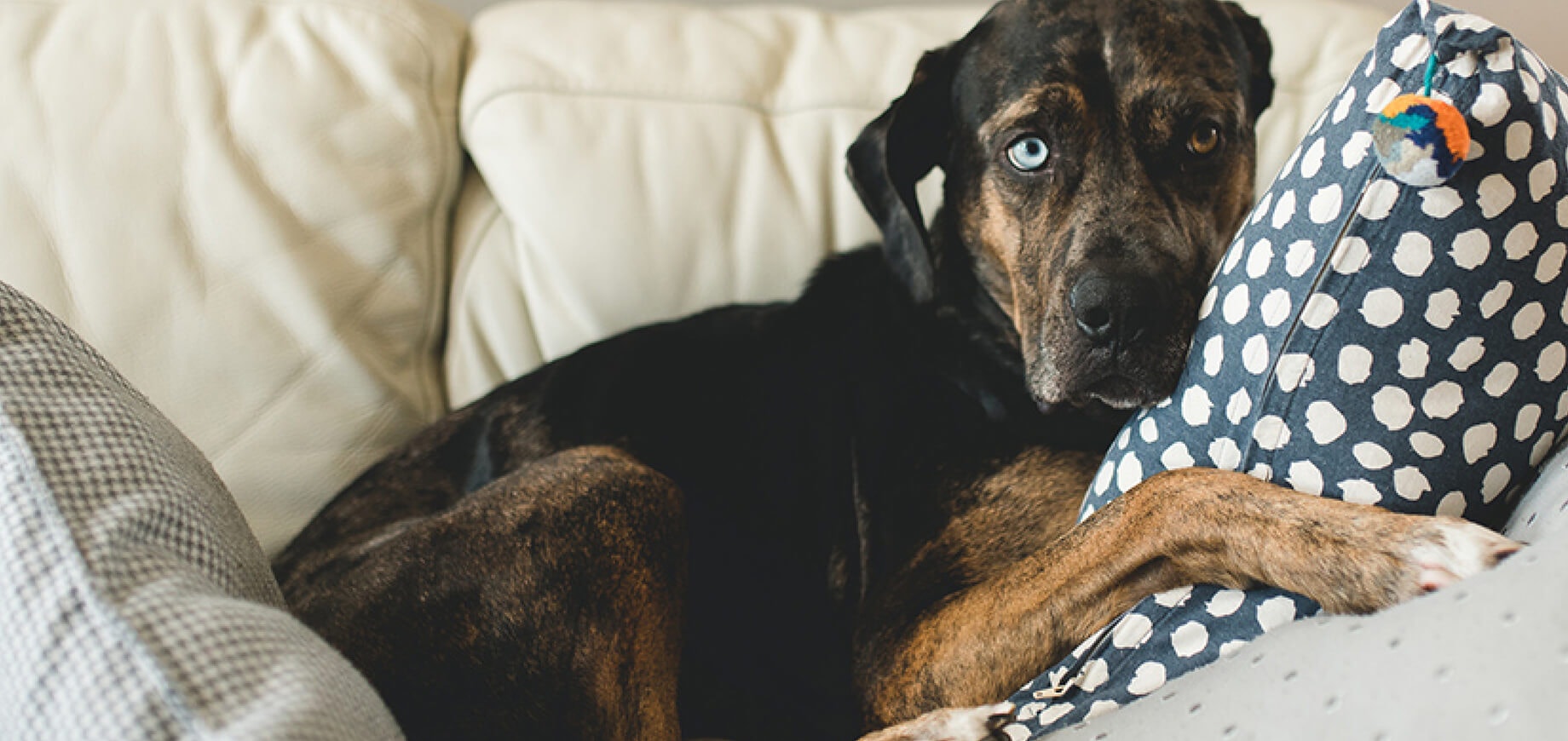Find products that match your dog’s needs

We have all met a canine 'wall flower.' They're the skittish character that avoids or barks at anyone who isn't on their short 'Favourite People' list.
Living with a shy dog can be extremely challenging. Non-confident canines require very gentle training and lots of patience from their caregivers. Shy dogs require repeated positive experiences with many different people. This should be offered only at a pace the individual dog can handle, in order for the association to be positive and the dog to develop confidence.
Here are some training ideas that can help your shy dog come out of their shell and help them realise that interacting with people can be positive, comfortable and even fun.
Create a safe space for your dog. Timid and frightened dogs need to feel safe. You should create a safe spot for your canine buddy, so they have a place to go when they need some time out. This could be their bed or crate, or a place they're naturally drawn to when they're feeling uneasy. Once a dog starts to feel safe, we can begin to build up their confidence.
Review the training basics. Then review them some more. When a dog can follow instructions from their pet parent, it helps build their confidence. Put your dog's leash on them, then head outside. Practice 'come,' 'sit,' 'down,' and other basic commands. Praise your dog when they display the desirable behaviour, to encourage them to keep offering it.
Practice people therapy. Have a dog-loving friend sit with their back to your dog. Place food treats in their outstretched hands. Tell your friend not to speak or make eye contact with your dog. Praise your dog when they take a treat. If your dog is super-shy, start this exercise outside, then have your friend slowly move inside the house. The aim is for your dog to learn that new people are good to be around, through the use of positive reinforcement.
Yawn. Yawning is a calming signal for dogs. Once again, have your friend hold treats while looking at the ground, not at your dog. It might sound silly, but ask your friend to yawn repeatedly—and join in. You'll notice your dog relaxing the more the both of you yawn. Again, every time your dog takes a treat, praise them.
Chin and chest only, please. When friends come over, have them stand still with a treat and let your dog go to them first. Ask your friends to only pet your dog under the chin and on the chest after they come to them. Kneeling down (as opposed to bending down) to your dog's level can be less threatening to them. Avoid letting anyone reach or lunge to pet your dog on the head or back.
Free play works wonders. Dogs that do not trust people can benefit from having other dogs as companions. Allow your dog to play freely with another dog in a fenced area. Have the parent of the other dog pet your dog, if possible. A tired, happy dog is often less skittish.
Most shy dogs can become friendly with positive human interaction. Usually these dogs must learn to trust individuals before accepting a friendship. Just be sure to let your dog set the pace of training. Never force your dog to do anything that makes them nervous, as this will only delay their progress. Set your pooch up for success every time.

Find PEDIGREE® dog food online at one of our retailers today!
Buy online
Click to buy from any of the retailers below


